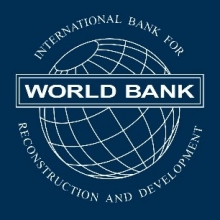Location
The World Bank is a vital source of financial and technic
The International Bank for Reconstruction and Development (IBRD) is an international financial institution, established in 1944 and headquartered in Washington, D.C., United States, that is the lending arm of World Bank Group. The IBRD offers loans to middle-income developing countries. The IBRD is the first of five member institutions that compose the World Bank Group. The initial mission of the IBRD in 1944, was to finance the reconstruction of European nations devastated by World War II. The IBRD and its concessional lending arm, the International Development Association (IDA), are collectively known as the World Bank as they share the same leadership and staff.
Members:
Resources
Displaying 6 - 10 of 26Multinational - Drought Resilience and Sustainable Livelihoods Programme in the Horn of Africa III
General
The Drought Resilience and Sustainable Livelihoods Program (DRSLP) is a long term Bank Program to build communities’ resilience to drought and Climate Change, improve their livelihood and promote regional integration in the Horn of Africa. The first project under the DRSLP was approved on 12 December 2012 for a total amount (loans and grants) of UA 83.12 million, while DRSLP II for a total amount of UA 74.98 million was approved on 26 November 2014. DRSLP II was prepared for UA 99.9 million covering Eritrea, Ethiopia, Djibouti, Somalia and Sudan, but this would have resulted in front loading of the Regional Operations (RO) Resources. Bank Management addressed the issue by deferring UA 20.00 million of the project resources from the RO window from 2014 to 2015. These are the resources that have been packaged to Project III with an aim to scale up the Program interventions in Djibouti and Sudan. The Project will be implemented in a period of 5 years and its total cost is UA 24 million, of which UA 21.5 is paid by the Bank and the remaining being the governments’ counterpart contributions.
Objectives
The Project is expected to develop infrastructures for: i) water mobilization and management, and ii) agriculture and livestock production, health and marketing. It will also build the capacity of the populations and Governments of the participating countries to better cope with the effects of climate change, resources scarcity and conflicts related to resources utilization.
Target Groups
An estimated 20 million agro-pastoralists affected by drought and land degradation will directly benefit from the project. Other direct beneficiaries include the Governments of the region whose capacities will be strengthened to enhance drought resilience development, natural resources management and shared benefits, and regional integration. Women and youth will particularly benefit from the project as specific activities (including value addition) will be designed to enhance their economic and social integration/empowerment. Ultimately, these outcomes are expected to contribute to fostering peace and social resilience within the project communities and countries.
Georgia Resilient Agriculture, Irrigation, and Land Project
General
The Project Development Objective (PDO) is to: (a) improve irrigation, and drainage services, and agricultural production in project areas; and (b) strengthen national irrigation and land management institutional capacity for climate resilient planning.
Land Investment For Transformation (LIFT)
General
To support the Government of Ethiopia in the provision of map based land certificates to farmers in four regions and assist them to fully benefit from increased investment and productivity through the development of the rural land market and its supporting operations. The project will be a driver to increasing income by 20% for over 500,000 households. It will also secure land ownership for 6.1 million households, of whom around 70% will be women
enVIRONMenTAL SERVICES
General
The Project Development Objective (PDO) is to support sustainable land management practices and increase communities’ monetary and non-monetary benefits in targeted Project areas which are mainly in erosion prone rural upland areas.This PDO is to be achieved through the support of alternative livelihoods and provision of environmental services and through sustainable utilization of wood andpasture products in the long term. The Project will particularly focus on enhancing the financial, economic, and institutional sustainability of land use and natural resources management, and will help build capacities of Albania farmers, community organizations and government institutions to efficiently use EU funding.
BR Sergipe Water
General
The project development objective is to promote the efficient and sustainable use of water in the Sergipe River Basin, by strengthening the State's sector management, enhancing land management practices and improving water quality.



